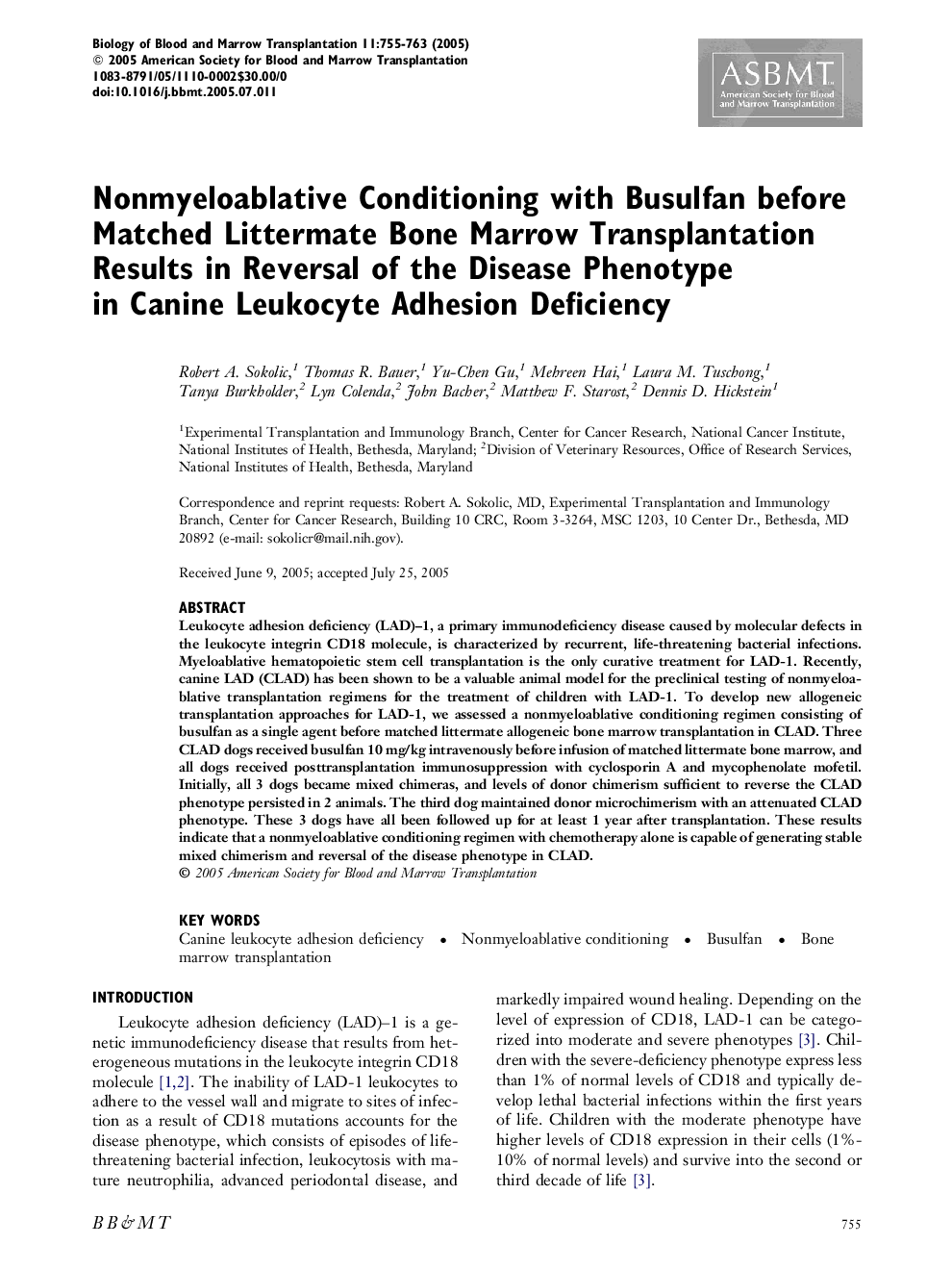| Article ID | Journal | Published Year | Pages | File Type |
|---|---|---|---|---|
| 9904143 | Biology of Blood and Marrow Transplantation | 2005 | 9 Pages |
Abstract
Leukocyte adhesion deficiency (LAD)-1, a primary immunodeficiency disease caused by molecular defects in the leukocyte integrin CD18 molecule, is characterized by recurrent, life-threatening bacterial infections. Myeloablative hematopoietic stem cell transplantation is the only curative treatment for LAD-1. Recently, canine LAD (CLAD) has been shown to be a valuable animal model for the preclinical testing of nonmyeloablative transplantation regimens for the treatment of children with LAD-1. To develop new allogeneic transplantation approaches for LAD-1, we assessed a nonmyeloablative conditioning regimen consisting of busulfan as a single agent before matched littermate allogeneic bone marrow transplantation in CLAD. Three CLAD dogs received busulfan 10 mg/kg intravenously before infusion of matched littermate bone marrow, and all dogs received posttransplantation immunosuppression with cyclosporin A and mycophenolate mofetil. Initially, all 3 dogs became mixed chimeras, and levels of donor chimerism sufficient to reverse the CLAD phenotype persisted in 2 animals. The third dog maintained donor microchimerism with an attenuated CLAD phenotype. These 3 dogs have all been followed up for at least 1 year after transplantation. These results indicate that a nonmyeloablative conditioning regimen with chemotherapy alone is capable of generating stable mixed chimerism and reversal of the disease phenotype in CLAD.
Related Topics
Life Sciences
Biochemistry, Genetics and Molecular Biology
Cancer Research
Authors
Robert A. Sokolic, Thomas R. Bauer, Yu-Chen Gu, Mehreen Hai, Laura M. Tuschong, Tanya Burkholder, Lyn Colenda, John Bacher, Matthew F. Starost, Dennis D. Hickstein,
